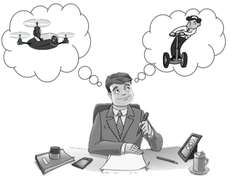 Selling safety is no easy task, especially when it comes to a new method, idea or product. Resources in any organization are finite, resulting in tough decisions on how to best allocate those resources between initiatives. With this in mind, one way to improve your chances of success is to consider each of five key traits of an innovation and their influence on how resources are ultimately allocated. The key traits include;
Relative Advantage The most important aspect of relative advantage is the perception of advantage over alternatives at a given moment in time, not necessarily an objective, measurable advantage. While factors such as costs can often be quantified, it is not as easy to precisely calculate things such as functionality, comfort, reliability, frequency, risk or the value of public relations. In selling safety, timing is important because of the psychological principle of “the availability effect” and it’s impact on how we estimate probabilities and cycles of risk. Empirical research demonstrates a pattern of overestimation and underestimation dependent upon recent events. If a fire has taken place recently, the perception of relative advantage of a new idea for reducing the risk of fire will be higher than prior to the fire. I’m not suggesting to wait for disaster before trying to secure resources to fund your initiatives, but to consider how the availability effect influences the perception of relative advantage. Compatibility Every organization has a unique culture and this culture can influence the extent to which a particular innovation will succeed. A simple example is Volvo verses Ferrari. The core values of Volvo make introducing new safety initiatives compatible with the culture. On the other hand, even though certainly Ferrari is also safety conscious, their focus is on speed, handling and a sporty image. This means introducing a way to improve safety will also need to balance the compatibility of the initiative with the culture of the organization. Simplicity A better mousetrap may indeed be cheaper and more effective at catching mice, but if the trap is more complex than existing alternatives it will often be rejected. In today’s environment a common mistake I have seen are surveillance or alarm systems that offer too many bells and whistles. There is a balance between a “feature rich” system providing a relative advantage and the perception the system is overly complex. It is better to focus on promoting the handful of features that will actually be used than trying to explain the entire range of options available. Triability An innovation that can be tried on a limited basis prior to making a larger commitment is more likely to be successful. A few examples are the automatic external defibrillator (AED), Segway or a new system for computer-assisted dispatch (CAD). There is a large difference between these tools in the degree to which decision-makers can try them before they buy them. Pilot programs most often target the end user and not the executives that will actually decide whether or not to allocate resources. At the end of the day this means the Segway will be an easier sell than the AED, which will win out over the CAD system. If presented with the opportunity, decision-makers can try the Segway, but without a real patient the AED is more of a demonstration than real world trial and the CAD system is also more of a limited demo than trial. Visibility Similar to triability, the degree to which an innovation can be observed influences success. Innovations that are highly visible are more likely to be adopted. Once again, the Segway is more visible to decision-makers than the AED, which is more visible than the CAD system. Innovations that are visible help to generate discussion, while those working behind the scenes find it more difficult to gain traction. Resources will tend to support visible innovations. Application When it comes to getting support for any new idea, method or product, the reality is that you most often are competing with other departments for resources, such as marketing or engineering. To give your ideas the best chance to succeed, consider not only how the above traits influence decision-makers regarding new safety initiatives, but also how they influence the initiatives being presented by these other departments. Play into the strengths of your initiatives and try and improve upon the weaknesses. If you know your idea has relative advantage, make sure to leverage this point. If the innovation is lacking in triability or visibility, focus on ways to get your idea noticed, find ways to expose executives to the often behind scenes world of safety. References Kahneman, D. (2013). Thinking, Fast and Slow (Reprint ed.). Farrar, Straus and Giroux. Rogers, E. M. (2003). Diffusion of Innovations, 5th Edition (5th ed.). Free Press. Taleb, N. N. (2010). The Black Swan: Second Edition: The Impact of the Highly Improbable: With a new section: “On Robustness and Fragility” (Incerto) (2 ed.). Random House Trade Paperbacks.
0 Comments
|
Authors
Richard Feenstra is an educational psychologist, with a focus on judgment and decision making.
(read more) 
Bobby Hoffman is the author of "Hack Your Motivation" and a professor of educational psychology at the University of Central Florida.
(read more) Archives
April 2023
Categories |
 RSS Feed
RSS Feed
